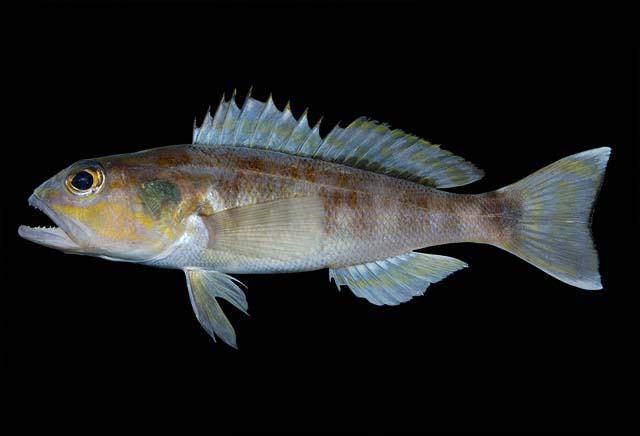|
Diplectrum euryplectrum Jordan & Bollman, 1890 Bighead sand perch |

|
|
photo by
Robertson, R. |
| Family: | Serranidae (Sea basses: groupers and fairy basslets) | |||
| Max. size: | 20 cm TL (male/unsexed) | |||
| Environment: | demersal; marine; depth range 15 - 150 m | |||
| Distribution: | Eastern Pacific: Gulf of California to Peru; including the Galapagos Islands. | |||
| Diagnosis: | Body elongate, not very deep, and little compressed, its depth contained 3.2 to 3.8 times in standard length; caudal peduncle very thick; preopercular angle with a broad "spur" consisting of 6 to 12 large spines; first gill arch with 21 to 27 gill rakers; anal rays 8; body grayish brown; flanks with indistinct dark, double, vertical bars; snout and cheeks with yellow stripes; soft dorsal fin with a dark band along its base (Ref. 55763). | |||
| Biology: | Inhabits sand or muddy-sand bottoms. Probably too small in size to be of commercial importance. | |||
| IUCN Red List Status: | Least Concern (LC); Date assessed: 01 May 2008 Ref. (130435) | |||
| Threat to humans: | harmless | |||